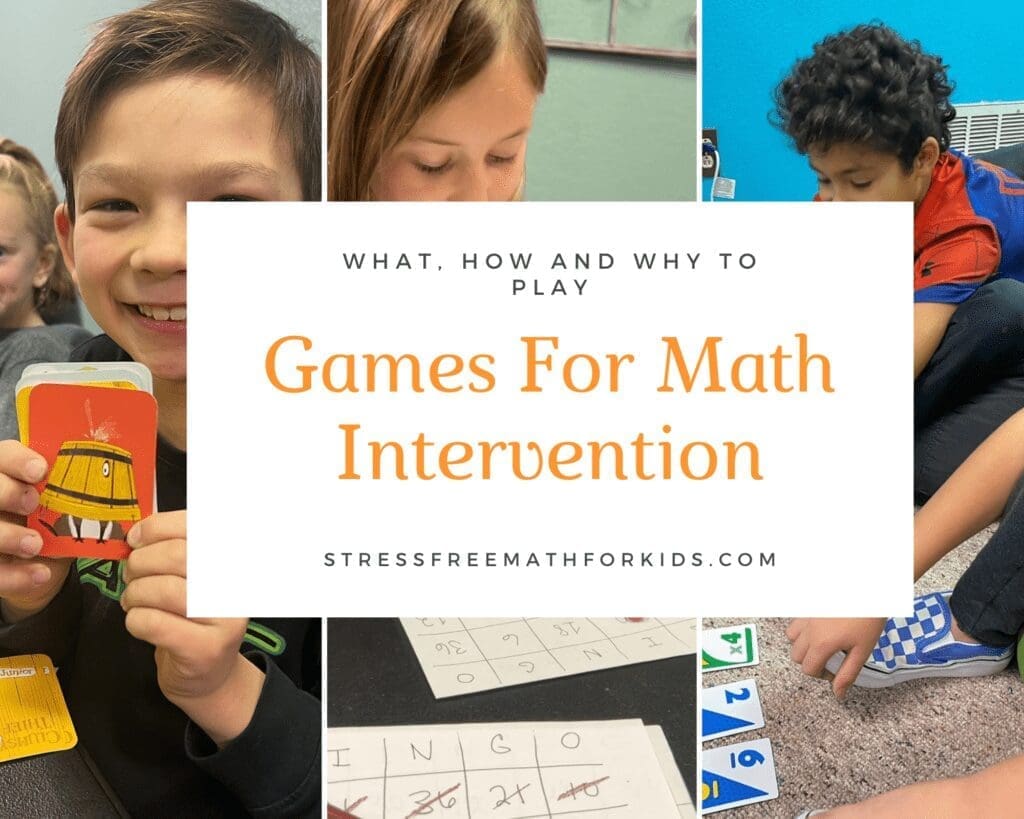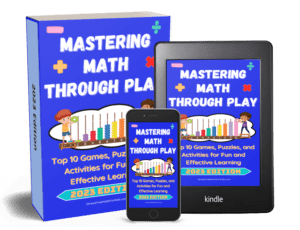Using games for math intervention is one of the best ways to motivate students and help them make fast progress.
Intervention students typically lack confidence in their math skills, and see themselves as “bad at math.” They have had bad experiences with math in the classroom. They associate math with frustration, difficulty, and feeling incompetent. Games can change all of that!
Here are the main advantages I see to playing games for math intervention:
- They are fun! Kids begin to associate math with fun. All of my intervention kids are excited when it is time to come to class, and often ask if we can play a specific game.
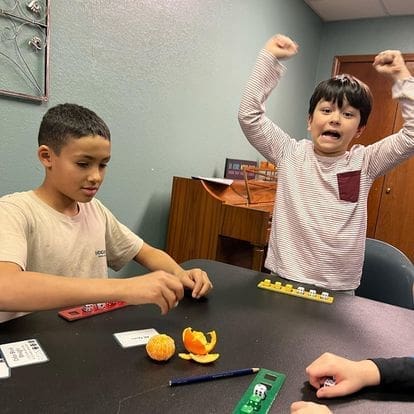
2.Because they are fun, and because the games that I play are almost all commercially available (usually on Amazon,) kids ask their parents to buy them! This has been the most amazing part to me. Every year at Christmas parents text me in disbelief that their kids have put math games on their wishlist. I can’t tell you how many times I have met with a student who excitedly told me they now have the math game we are playing at home. One second grader told me “I play Sleeping Queens every night. If my parents are too tired to play with me I play with my stuffed animals.”
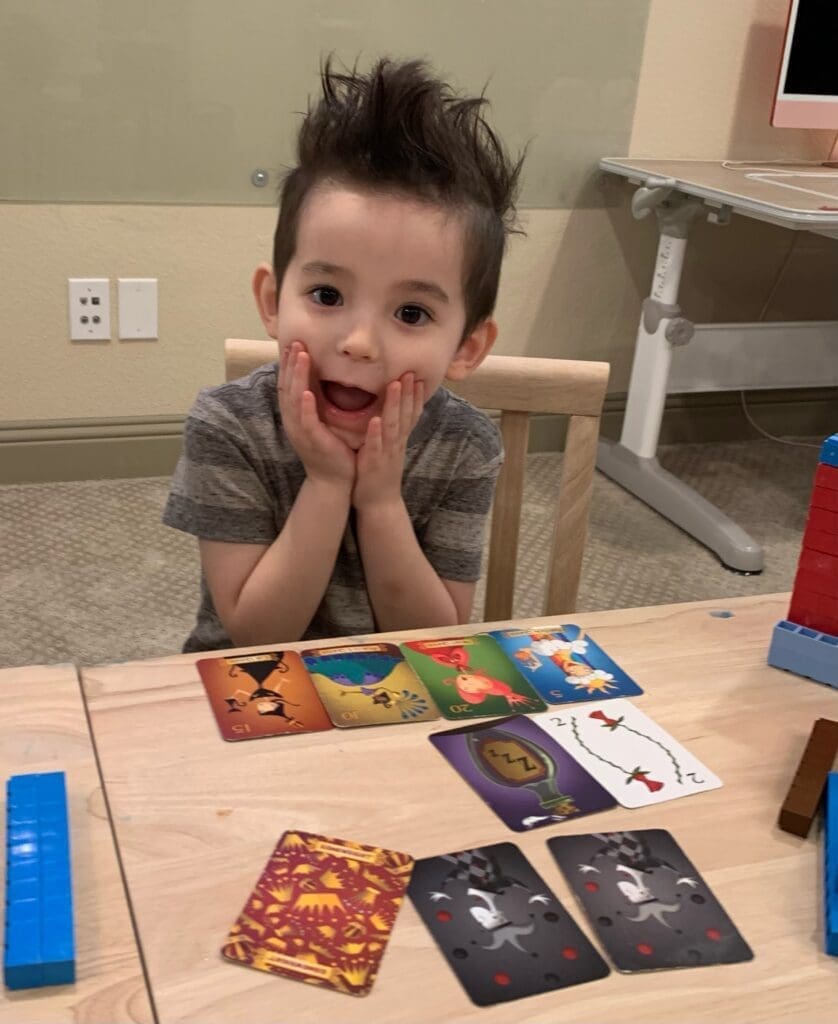
3.Most of the games I use for math intervention practice multiple skills in an integrated way. One problem with “educational games” (besides the main problem of being boring) is that they are focused on a specific type of problem. What I call “real” games develop number fluency and mathematical thinking. It is very easy to bring additional skills into a game in a non obvious way. For example, having students keep score and add points. Comparing and ordering scores to determine placement of winners. Finding the difference between scores (presented to students as “Wow! You beat me by a lot! Let’s figure out how many points you beat me by.”)
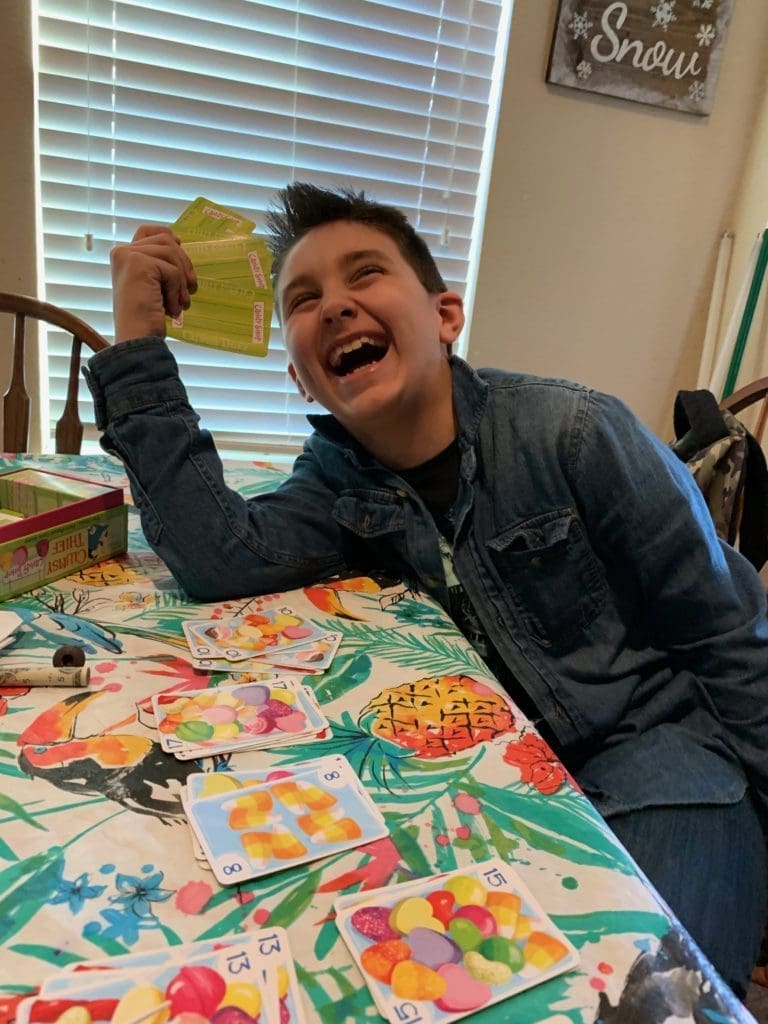
The question of course is how do you work games into a limited time? When I do private tutoring or even private math groups, I schedule one or even two hours to allow time to explore manipulatives, learn in a discovery based way, play games, and do projects/math art. I have students who come to me for homework help and I schedule them two hours to have an hour to do homework and an hour to play math games! If you are interested in doing this, I have a lot of resources on the way to help you find students (I work with many homeschool students) and set up sessions.
However, I do also work part time at a school where I have 30 minute intervention blocks. This is more challenging! I was fortunate that the school has given me complete flexibility to do what I know works. So what I do is spend the first few sessions solely playing games. This accomplishes three things:
- The students have a very positive attitude about coming to intervention and a good relationship with me.
- I am able to get a good feel for their math confidence, mindset, thinking, and skills. They also start to develop more confidence, which greatly speeds up their ability to progress in math!
- They know how to play the games, so we can play them much more quickly later.
I have a few favorite games I use for math intervention which I will be making videos about over the next couple of weeks.
Then, after all the students are associating fun with math, I add in whatever else I have to do, which is at this time of the year practicing standardized testing questions. I was afraid the transition from all games would be hard for them but it wasn’t at all! Here’s what I do now:
- “warm up” their brains with a quick game, or round of a game. Clumsy Thief is my absolute favorite for this- the fluency developed is so important, it comes at 3 levels and can be used with any elementary grade, the kids LOVE it, and once they know how to play they can play a round in about 5 minutes.
- present whatever else we need to work on that day. I make sure to be very positive about it, and if possible to tie it into something I noticed in game play. “So I noticed (whatever skill) is still kind of hard for you and I brought some things that are going to help you learn it.” Sometimes I can make this into another game. Sometimes I can’t. They’re ok either way. I do use A LOT of manipulatives, which are just as engaging as games!
- Usually I can make what we are working on engaging enough that when the time is up the kids can’t believe it! If, however, it is something that is frustrating, I do make sure we stop in time to have at least 5 minutes to end with another favorite game. I ALWAYS have one with me that they are familiar with and can be played quickly. It can turn the tone around immediately if it was a rough day and make sure they leave feeling positive.
Here is my list of board and card games I use. Videos are coming soon!


